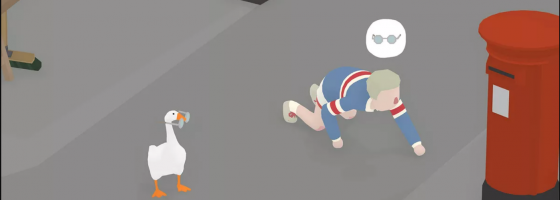Covering games through Game-Wisdom has put me in a unique position compared to other people when it comes to games journalism. I don’t normally seek out AAA or mainstream games to play, but I’m always happy to dive into the wonderful weird world of indie titles. Therefore, indie games tend to dominate my best-of lists each year.
But most people don’t pay attention to the indie space, and why they do, they become so fixated on a particular game that it blinds them to the rest of the market, and why I want to talk about the problems with having “indie darlings.”
The Hot New Thing:
Right now, regardless of when or where you’re reading this article, there is a good chance that at minimum 30 games are being released right now. No matter how dialed in you are to the game industry, there is literally no way that someone can cover every great game — indie or AAA — released. Many people don’t even bother with indie games; with complaints about quality or content being the chief reason.
Why should someone play a quirky platformer when they can get into the Red Dead Redemption 2, Call of Duty, Fortnite, etc.? However, without fail, every few months we do see that indie game enter the popular zeitgeist and become the new indie darling.
The darlings are titles that achieve across the board recognition from fans and critics, becoming minor pop culture events for the title. The sign of a new darling is when major sites like IGN, Destructoid, etc., and even non-game sites will cover the game. Journalists will write think pieces trying to figure out why the game succeeded, and as we talked about in my piece on why there is no magic in game dev, developers will try to copy that formula.
Don’t believe me? How many of you reading this right now know games like Darkest Dungeon, Five Nights at Freddy’s, Stardew Valley, and Getting Over it With Bennett Foddy? You can say that these games were popular because they did something different for their time, but I could say the same for the dozens of amazing games that get unnoticed each year by the mainstream and critical market.
Celebrating videogames is not a crime, but when your only metric for looking at a game is just looking at the winners, it blinds you towards the rest of the market.
What is an Indie Game?
As I just mentioned, when a new game becomes an indie darling, it dominates a lot of the discussions about indie games and game development. When Celeste blew up, everyone couldn’t stop talking about the story focused on depression, or the assist mode. With Untitled Goose Game, people are having philosophical thoughts about playing as an angry goose and the fact that there is no violence in the game.
Many of these pieces that come from major sites rarely give the time of day to the indie market — with exception to the new darlings. With both Slay the Spire and Dead Cells, I was writing and talking about them months before major sites started talking about them like they just unearthed buried treasure.
And that phrase “buried treasure” is how some people view indie games: that you must dig past the “undesirables” to get to the winners hidden.
The line between what is and isn’t an indie game has become blurred over the years. Just because a game was released without a publisher doesn’t make it an indie game, and even if a studio started as an indie, it doesn’t mean they’re still considered one now.
With Studio MDHR, they went from relative unknowns to big names as more news about Cuphead came out, and that they were picked up by Microsoft.
Many of the most innovative titles from the indie space don’t blow up, because they weren’t designed to, and this is where that misconception comes into play. For general consumers, the only times they hear about an indie game is after it gets featured everywhere, but many of the best examples of indie titles are niche experiences for one reason or another.
It wouldn’t take much pushing for me to come up with a list of ten indie games that deserved more coverage and analysis than they received from the mainstream. And when the mainstream does try and push only the games that are — or want to be the next indie darling — it can come back to bite everyone.
A Waterous Failure:
Last year there was a huge critical push to get the game Where the Water Tastes Like Wine massive coverage. Game journalists, major sites, and big names in the streaming and YouTube community couldn’t stop talking about it.
This was a folk-story exploration of America with Sting providing narration, along with notable writers and voice actors lending their talents to the game. Once again, think pieces were written about how great it was to see an indie game get all this coverage, the fact that there was no combat, and the stories it was trying to tell.
There was just one problem that no one seemed to mention: The gameplay and moment-to-moment loop were terrible. The whiplash of critical and local feedback compared to the mainstream reception was huge, and it reminded me of the game Skyshine’s Bedlam in that regard. With Bedlam, the developer received nothing but positive praise when it was shown to friends and local people, to be heavily criticized for its design among the mainstream reviewers. The designer of Where the Water Tastes Like Wine did a postmortem on medium to work through where things went wrong.
Issues that he talked about in terms of playability and design, I could see within 15 minutes of playing the game, and sometimes I’m shocked that these issues were not dealt with during development or brought up.
Avoiding the Pedestal:
There’s a habit I feel among people who judge videogames to idolize and quickly praise titles that do anything different compared to what they normally play. For all the games I’ve listed in this piece, they weren’t extraordinary titles that redefined what it meant to consume games, they were just titles.
As we’ve discussed previously, good criticism is not blindly ignoring or avoiding talking about issues with a game. No matter what, there is no such thing as the “perfect game”: that title that has 100% popularity and no one will dare say anything bad against it.
If all you do is just play the biggest names in the game industry, then you are doing a disservice to the many titles that are out there doing something different. They may not sell a million copies, or have big name streamers playing it, but a healthy market needs more than just a handful of titles to keep going. From a design standpoint, it is crucial to play and analyze games of all areas to see what is going on in the market, and where things can be improved.
One of the previous indie darlings was FTL who caused a wave of similar titles to come out following its success. Many of those games failed because they simply tried to copy FTL without understanding what the game did right and wrong. Just saying your game is like X, or was “spiritually inspired” is not enough to convince someone to buy your game.
No one is saying you shouldn’t be inspired by popular games, but the inspiration should be the starting point, not the end goal of your game.
If you enjoyed this piece, be sure to check out the Game-Wisdom Discord Channel open to everyone.



